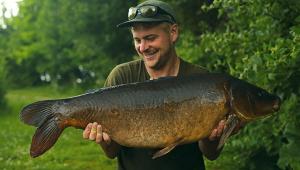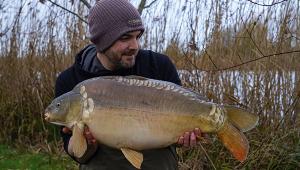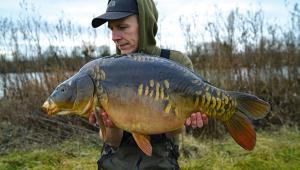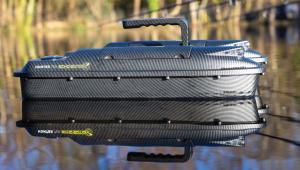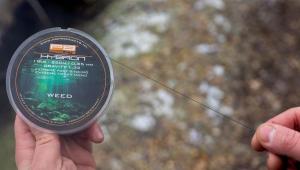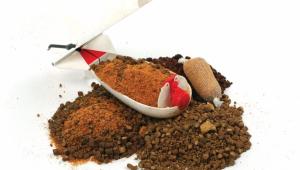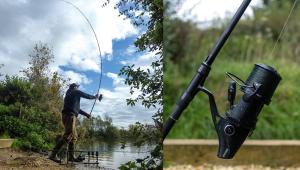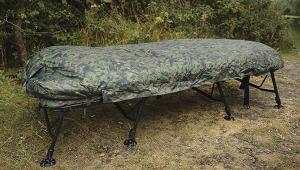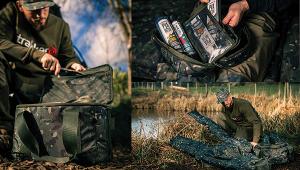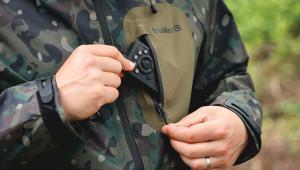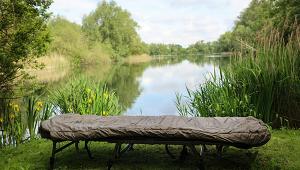The Claw
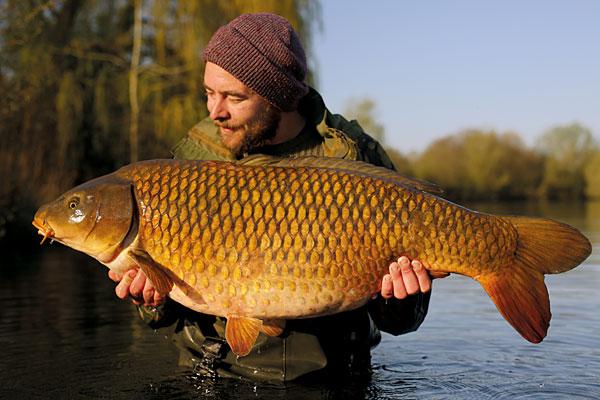
Most of my fishing is done to spots, mainly clean ones in an area where I have either seen carp or believe them to be. When you are fishing these sorts of areas, I think it is important to get the rigs right, as the fish would have most likely been fished for on that particular spot or areas similar to it.
The rig I use depends on what I am feeding and, more often than not, particularly on the cleaner spots, I like to feed lots of small items. Crushed and chopped boilies, corn, pellets, maggots in the winter, loads of small items, and I want my hook bait to match what I am feeding, or at least be a similar size and behave as the freebies would.
Two or three kilos of chopped bait create a lot more mouthfuls than 3kg of whole baits and the fish will feed considerably differently over it as a result of that. I like the variation in freebies as it firstly confuses the carp and secondly releases all the attractors that the bait carries much quicker. I have seen what a 14mm or 16mm pop-up looks like over this sort of mix and it stands out like a sore thumb, which is why I do like a smaller hook bait.
Myles uses a lot of small baits in his mix, such as crumbed and chopped boilies.
I like using smaller baits to match that mix, but it also lends itself to the rig that I favour for it. I use what I can only call a claw rig, just by the way it sits. It allows me to use a small pop-up in conjunction with a nice big size 4 hook, to allow the bait to hover just above the hook. The small pop-up makes the hook invisible, which can be an edge whatever your theories are on fish seeing the hook, and for me it is just that little bit of confidence in knowing that your arrangement is an inconspicuous as possible.
The bait sinks slowly, being totally balanced, which I believe helps hook carp. What it also does is allow the rig to reset, which is key, especially when fishing over small items. The carp’s pecs alone will wave the rig and bait around at times and having that rig able to sit back into that aggressive position each time is imperative.
The whole ‘small baits thing’ came about from fishing at range, as they allow you to get that extra bit of distance. But the amount of success I have had using them has drawn me to use them whenever now, unless I am in a situation where I feel I would be better off using something like a hinge if the fish are not feeding on cleaner spots.
He likes a small pop-up and often, a bright one too.
On hard bottoms, Myles prefers a beaked point to protect it from the gravel.
Every lake is different, due to the amount of other species in them, but on lakes where I can get away with it, fishing like this is a real edge and has caught me carp from some really tricky venues. You have to remember these fish have seen it all and you need to be ahead of the game and thinking outside the box; doing something different will often stand you in good stead and not a lot of people use small baits like this. If I feel that the bream and tench are going to be a problem, then I would add more whole baits and halves as opposed to crumb, and up the bait to something like a 14mm or 16mm bait because I had to.
I still want that bait sitting low to the bottom like a claw, which I am convinced gets me more bites. It isn’t a pop-up, nor is it a bottom bait; I feel that you get the look of a bottom bait but the hooking efficiency of a pop-up, so you are taking the strengths of each presentation and merging them into one.
There is a lot around hook sharpness nowadays and I have always been an avid sharpener of my hooks, but I do get asked a lot of questions with regards to this presentation due to the way it sits. I always make sure that my hook is razor sharp, but will only sharpen when I feel it necessary. If I am on really clean gravel, that point has a chance of being burred quite easily. This is when I would just fish the sharpest ones from the packet and not sharpen them at all.
The claw rigs sits as it says, super-aggresive and very inconspicous.
If the spot is silt or just a firmer clay spot then I would sharpen them, as the bottom isn’t likely to burr that hook over. I am always checking the point, even on a miscast; I reel it in and make sure that the point is still as sharp as before. I am relying on that hook to prick the carp’s mouth when it grabs hold and if it isn’t sharp enough, you are relying on them to panic in order for them to hook themselves. They don’t always do that and will often sit there and just spit it out, so having that needle-sharp point will make it harder for them to do so.
If I do want to sharpen and feel that the lake bed could cause me an issue, I go from using a straight-point hook to a beaked, as that curve in the beak will slightly stay away from any potential hazards on the lake bed.
The only time that I really sharpen my hooks, to the point where they are needle-sharp and fine in the wire, is when fishing with pop-up rigs such as hinges. The hook is sat away from the lake bed and it can’t be burred, so I am convinced that having that needle-sharp point gets me more bites.
My hooks have always got to be sharp, but even more so in the colder months. Everything is slowed down, the carp’s movements decrease and so do their reactions, so my ‘hypodermic needles’ will get me more bites. With the claw rig, because the spots I am fishing to are often clean and the baiting situation is tight, I do like to use a rig of around six inches, which is fairly short. I want something short because of the way that the baiting situation is; lots of small items and they won’t have to move far between mouthfuls.
Plenty of spare rigs tied up with baits balanced.
If he wants to really sharpen the hooks and fish over detritus, he uses hinges.
To tie the rig, I start off with a coated braided hook link. This year I have been using a new one on test from Thinking Anglers and it is perfect, mainly because the coating is stiff enough to kick the rig away from the lead, but has a bit of suppleness in it to allow the bait to move against the way it’s sitting. I want the rig to be able to go back on itself almost, in case a fish is feeding directly over the top of the rig, whereas a stiffer hook link won’t be able to turn around as easily.
Also, the inner braid is really supple, which is what you need to allow the hook to turn and grab hold properly, and the bait to sit how it does. I strip some of the coating off the braid, tie my loop in the hair and add some silicone to the hook link. I used to whip up the shank 14 to 15 times, but I noticed that some of the fish I landed were spitting the rig once in the net. By adding that silicone it enables the whole bend to be exposed, which I think grabs hold much better and since changing I have not had the issue.
I then whip down the shank six times and back over it six times, making sure that the hair comes off perfectly straight. By doubling it up it ensures that once the hair comes off straight it stays like that and it’s really important for the way the rigs sits for it to come out perfectly straight. If it comes out at an angle, it may be 70 per cent efficient if they come at it from one way and 30 per cent another, whereas if it is straight it is 100 per cent every time.
I will either use a chod-style hook with a sizeable bit of shrink tube to create a straight point but wide-gaped hooking arrangement. Or I use a wide-gape style hook with a smaller shrink tube kicker, steamed at less of an angle to again keep that gape nice and big. I have a couple of millimetres stripped back after the shrink tubing and then a bit of putty, and put the rig in the boiling water to shrink the tube, when it will release the fibres in the inner braid, making them even more supple.
I then steam the rig and attach my bait and I want the pop-up to sit close to the shank of the hook, with the silicone roughly level with the barb. By using a small pop-up – either a 12mm Signature Squid or one of my home-made fruity ones are my go-tos for this – the rig will sit like a claw. I always check the rig in the edge to see how it sits and I try not to have it so that I have to trim the pop-up if I can, but if I have to take a little bit off I will. By using a big size 4 hook, generally it will bring it all down nicely.
One of a number of big fish that Myles has caught by using small baits.
It is a rig that has accounted for most of the fish that I have caught in recent years, especially some of the bigger ones. That might be down to the amount I use it, but I have used it on big lakes, riggy places, small ponds, absolutely everywhere and it just works.
The place that I really noticed how effective it is was a few winters ago on a pit called Little Horsehoe. I was absolutely piling in the Manilla and sweetcorn and fished the little bright ones over the top on claws and caught a lot of fish. I was told the fish were really cagey and didn’t like disturbance, but I think I landed 18 fish in three trips including the big mirror, which gave me a lot of confidence. I then took it to Christchurch a few weeks later and caught a few fish to 45lb, again using the same tactics on another really riggy pit.
It is extremely simple and super-effective, and I don’t need to use PVA bags or so on, I can literally watch the rig go out and see if it tangles, which is very rare. It makes fishing super-simple, but if am fishing closer in and need to get the rod back out after a fish, I don’t want to be making four or five casts, I want to do it in one cast and leave it.
If the spot is rocking and Myles only wants to make a single cast, a bag makes sure the rig is fishing.
I like to add a small PVA bag of pellets with a foam nugget inside. What this will do is make sure the rig doesn’t tangle, and when it does land the bag will pop up until it melts and then the rig will flutter down and be fishing, even if it lands in some weed. I think that can be the difference between having one in a morning to two or three.
I should also mention that I do use larger leads for this rig, mainly because I feel that the bigger the lead the better the chance of the carp being hooked once it picks up the rig. A sharp hook and big lead for me is the key to the most efficient rig and lead arrangement.
I fish them with a loop at the other end of the rig to allow me to change the rig quickly. I have a load of rigs tied up ready to go as sometimes I could be using a dozen rigs through bad casts, catching fish or so on, so being ready and prepared, particularly when the bite times at this time of year are so short, is really important.
How To… Tie The Claw Rig
1. Start off by taking a length of coated braid, this is a sample from Thinking Anglers.
2. Break a few inches of the coating off.
3. Form a small hair at one end.
4. Attach your bait and make sure the knot is inside the pop-up to prevent it moving
5. Cut off a small piece of silicone tubing.
6. Hook the hook through it and whip down the shank six times and back over it another six.
7. Make sure the hair is coming off staight and add some shrink tube.
8. Place the rig inside a kettle of boiling water.
9. Curve the shrink tube, add some putty and away you go.
- Log in or register to post comments
